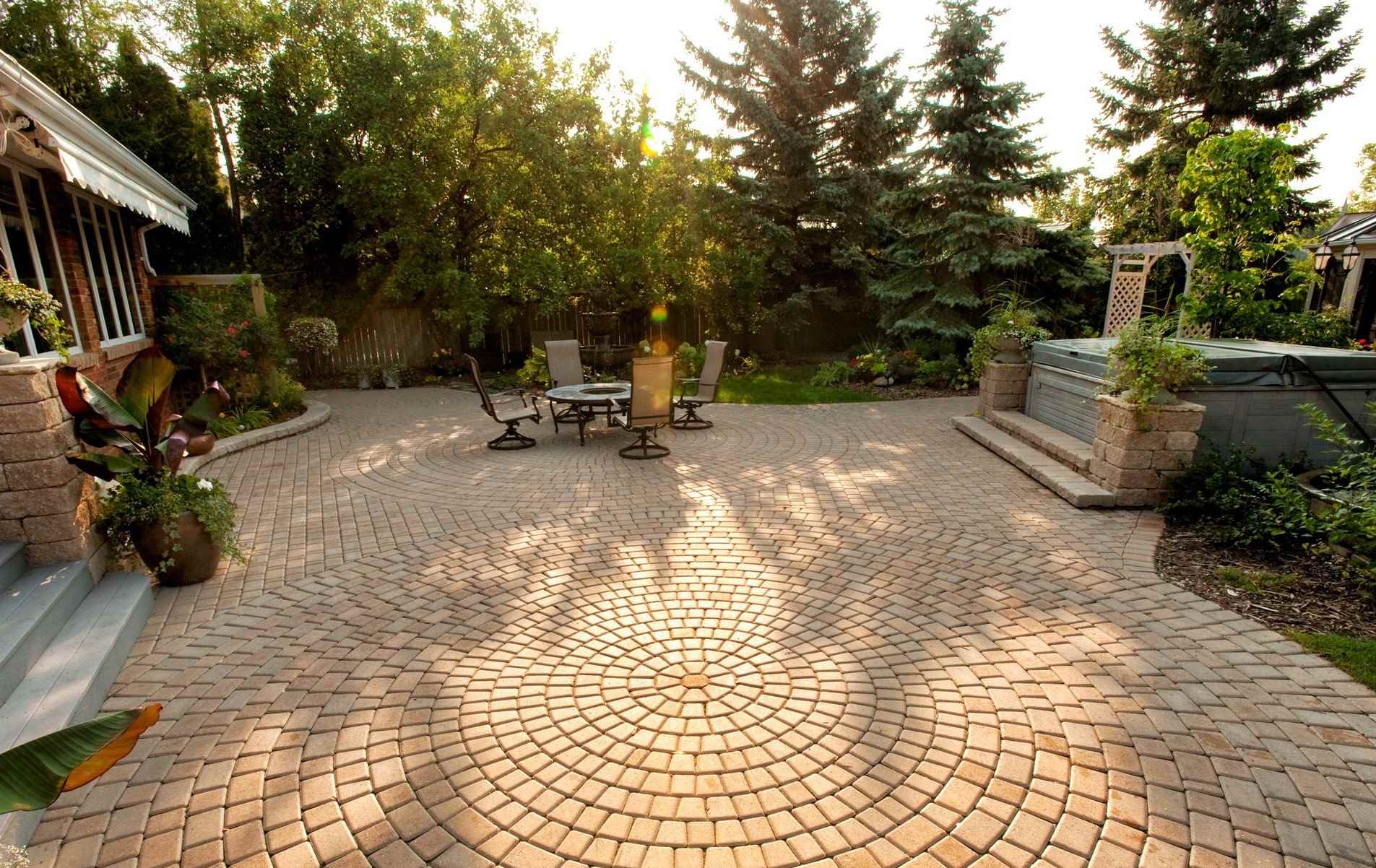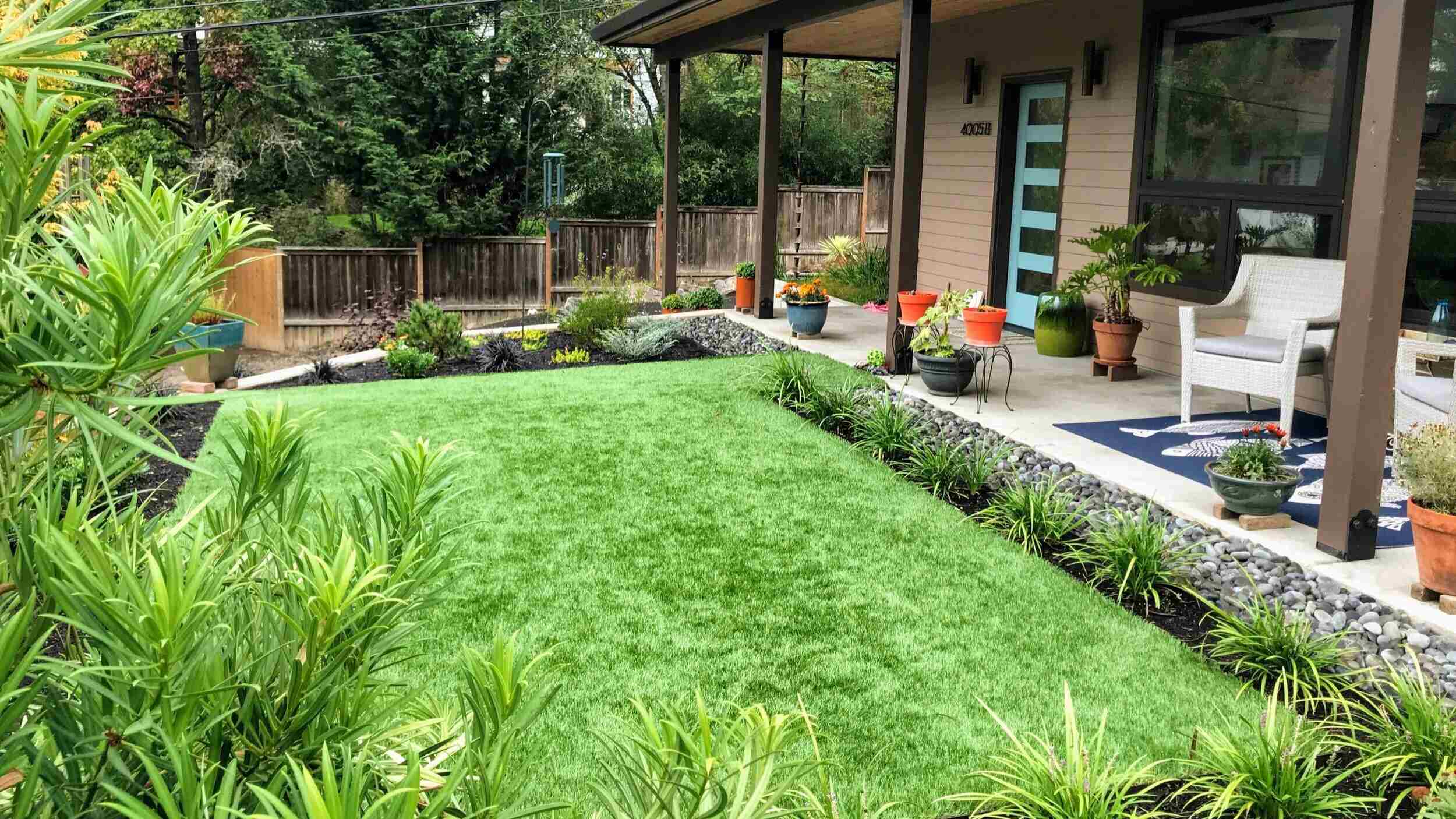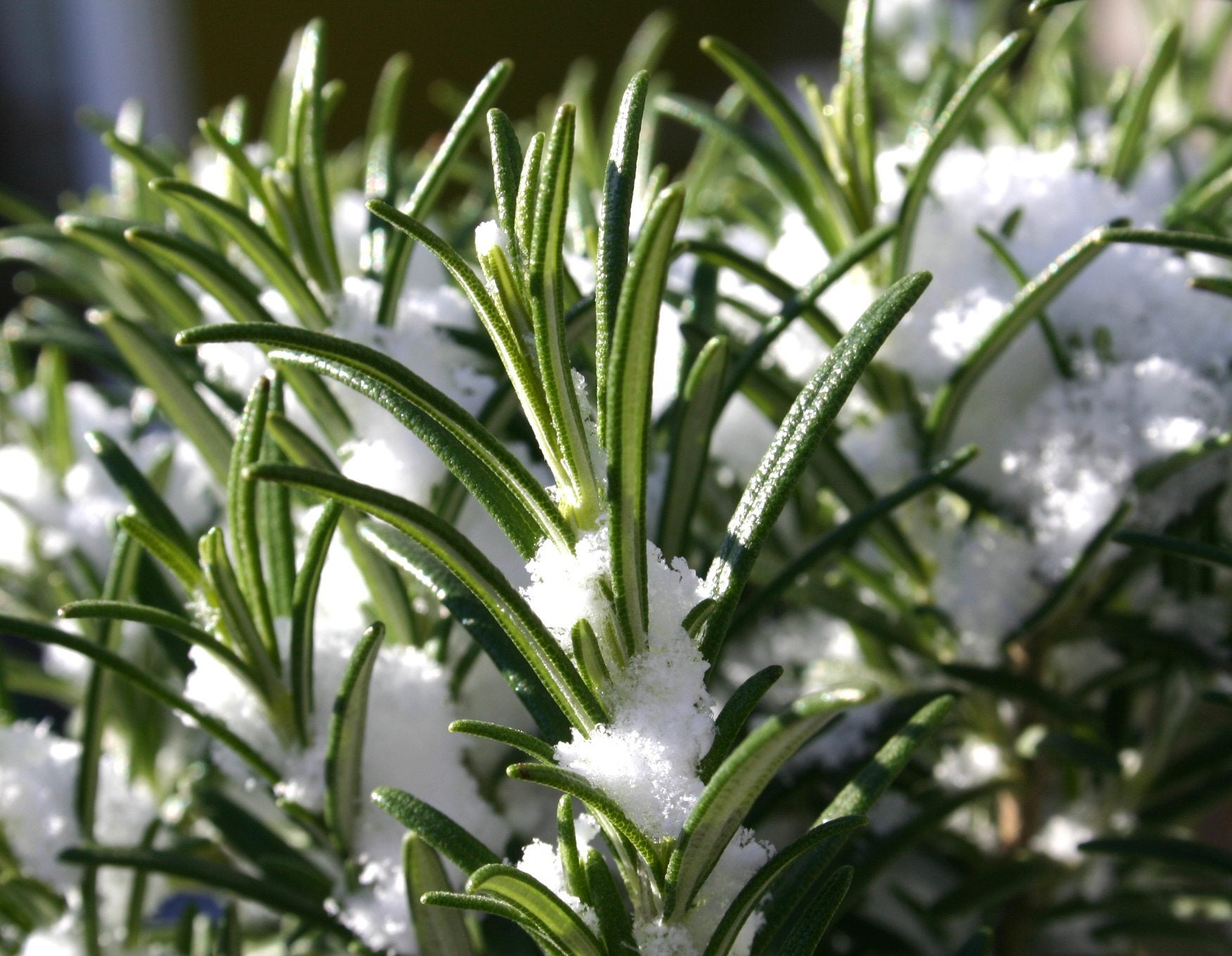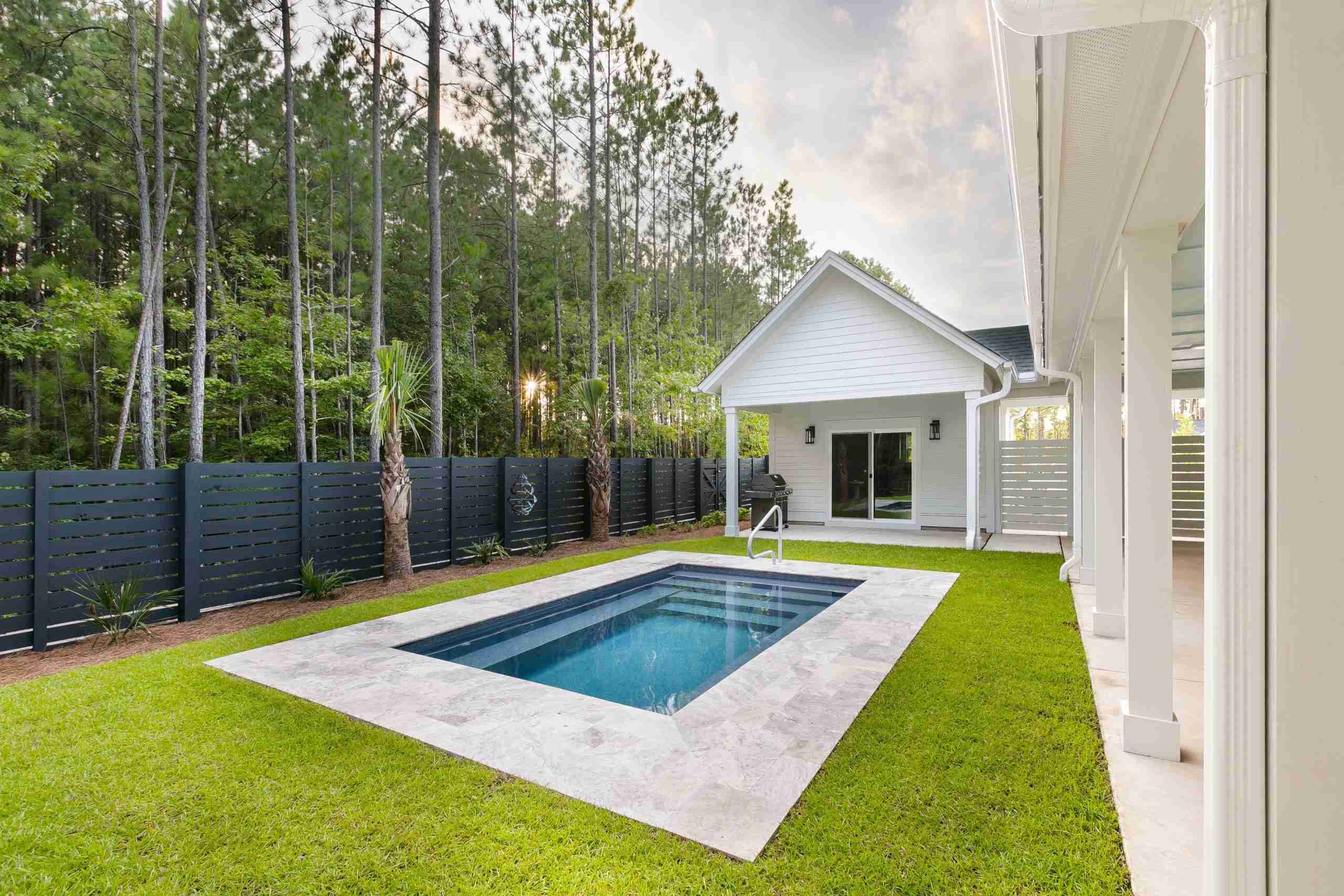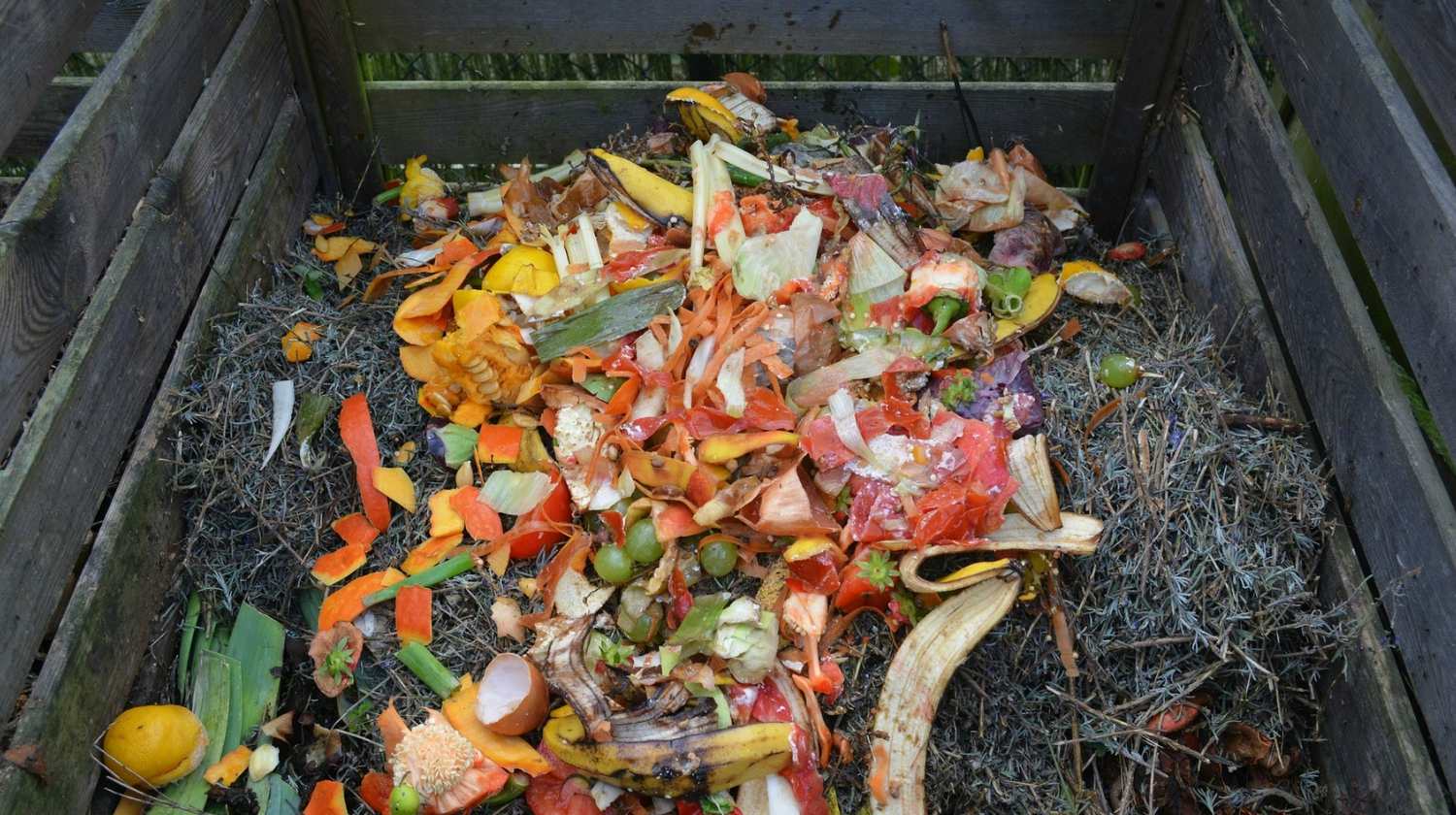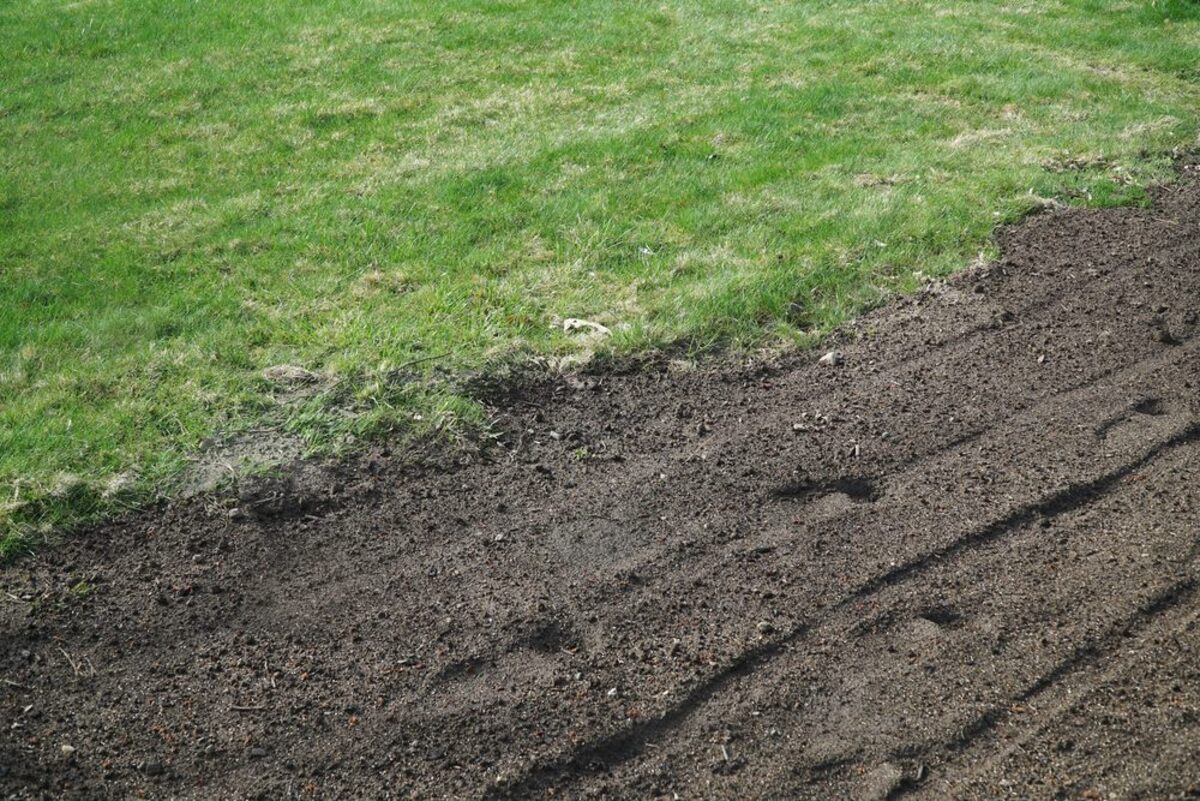Home>Garden Design>What To Put Over Dirt In Backyard
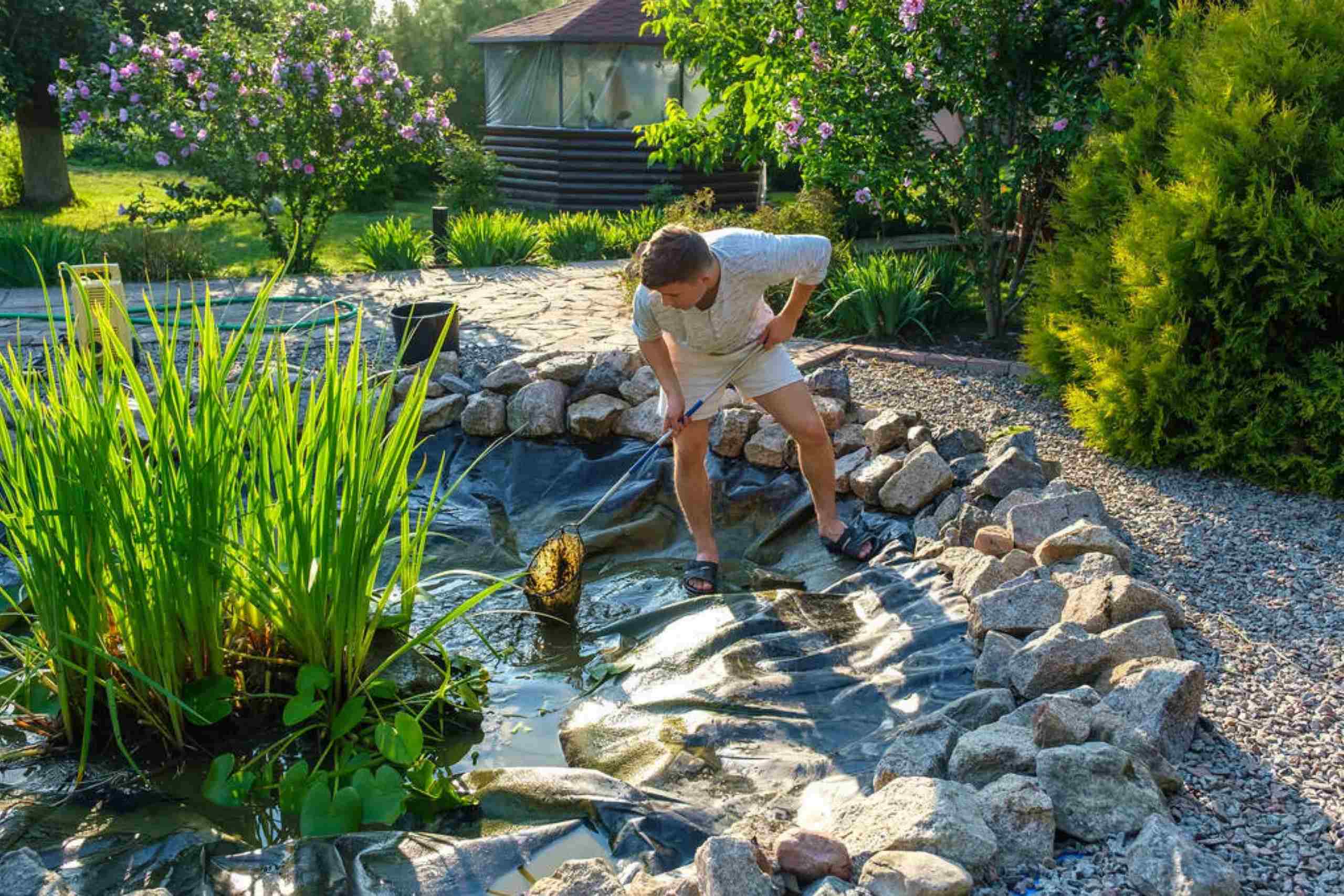

Garden Design
What To Put Over Dirt In Backyard
Modified: February 8, 2024
Enhance your backyard with our professional landscape design services. Find out what to put over dirt to create a stunning outdoor space.
(Many of the links in this article redirect to a specific reviewed product. Your purchase of these products through affiliate links helps to generate commission for Chicagolandgardening.com, at no extra cost. Learn more)
Table of Contents
Introduction
Having a backyard can be a wonderful space for relaxation and outdoor activities. However, if your backyard is covered in dirt, it may not be the most inviting place to spend time. Fortunately, there are several options available to cover up the dirt and transform your backyard into a more appealing and functional space.
The benefits of covering dirt in your backyard go beyond just aesthetics. By adding a layer of material over the dirt, you can create a cleaner and more organized space. This can help to prevent mud and dust from being tracked into your home, making for a cleaner indoor environment. Additionally, covering the dirt can provide a safer surface for activities such as playing sports or walking barefoot.
When choosing the best option for covering the dirt in your backyard, it’s important to consider your specific needs and preferences. Factors such as budget, maintenance requirements, and desired aesthetic should all be taken into account. With a wide range of options available, you can find a solution that fits your unique style and enhances the functionality of your outdoor space.
In this article, we will explore some popular options for covering dirt in the backyard. From mulch and gravel to artificial turf and concrete, we will discuss the benefits and considerations of each option. Whether you’re looking to create a lush green lawn or a sleek paved patio, there is a covering option that will help bring your backyard vision to life.
Benefits of Covering Dirt in the Backyard
Covering the dirt in your backyard offers a range of benefits that go beyond simply improving the appearance of the space. Here are some key advantages of using a covering for your backyard:
- Enhanced Aesthetics: One of the primary reasons to cover the dirt in your backyard is to create a more visually appealing space. By adding a layer of material, you can transform your backyard into a beautiful and inviting area. Whether you choose lush green grass, decorative mulch, or stylish paving stones, a covering can instantly enhance the overall aesthetics of your outdoor space.
- Reduced Maintenance: Dirt can be difficult to maintain, especially if it gets muddy or dusty. By covering the dirt in your backyard, you can greatly reduce the amount of time and effort required for maintenance. For example, if you opt for artificial turf, you won’t have to worry about mowing, watering, or weeding. Similarly, by using gravel or mulch, you can minimize the need for regular maintenance tasks, such as watering and fertilizing.
- Improved Cleanliness: Covering the dirt in your backyard can greatly improve cleanliness, both outside and inside your home. It helps to prevent dust and dirt from being tracked into your house, keeping your indoor environment cleaner. This is particularly beneficial if you have children or pets who often play in the backyard and then come inside. With a proper covering, you can minimize the amount of dirt and debris brought into your home.
- Enhanced Safety: Another advantage of covering the dirt in your backyard is that it provides a safer surface for various activities. For example, if you cover the dirt with artificial turf or grass, it can create a soft and cushioned playing area, reducing the risk of injuries from falls. Similarly, using gravel or rubber mulch can create a stable and slip-resistant surface that is ideal for walking or running.
- Increased Functionality: A covering for your backyard can greatly increase its functionality. Whether you want to create a designated seating area, a play space for children, or a spot for outdoor dining, a layer of material can define and enhance different areas of your backyard. It allows you to optimize the use of your outdoor space, making it more versatile and accommodating to your specific needs.
Covering the dirt in your backyard can offer numerous benefits that improve both the aesthetics and functionality of your outdoor space. It can create a cleaner, safer, and more enjoyable environment for you, your family, and your guests to enjoy throughout the year.
Options for Covering Dirt in the Backyard
If you’re looking to cover the dirt in your backyard, there are several options available to suit your needs and preferences. Let’s explore some popular options:
- Mulch: Mulch is a versatile and affordable option for covering dirt in your backyard. It is available in various types such as wood chips, bark, or cocoa shells. Mulch not only adds an attractive and natural look to your outdoor space but also helps retain moisture, control weeds, and protect plant roots.
- Gravel or Crushed Rock: Gravel or crushed rock can create a stylish and low-maintenance covering for your backyard. It is durable, allows for good drainage, and can withstand heavy foot traffic. Gravel is available in different sizes and colors, offering versatility in terms of aesthetics. It is particularly suitable for paths, driveways, or areas where you want a more rugged look.
- Artificial Turf: Artificial turf provides the look and feel of a lush green lawn without the hassles of mowing, watering, and fertilizing. It is a synthetic grass alternative that requires minimal maintenance. Artificial turf is durable, long-lasting, and can withstand various weather conditions. It is an excellent choice for families with children or pets who want a clean and inviting space for outdoor activities.
- Concrete or Paving Stones: Concrete or paving stones offer a durable and functional option for covering dirt in your backyard. They can be used to create patios, walkways, or outdoor seating areas. Concrete is low-maintenance and provides a clean and contemporary look, while paving stones offer a more intricate and customizable design. Both options are long-lasting and come in a variety of colors and finishes.
- Wood Chips or Bark: Wood chips or bark can add a natural and rustic look to your backyard while serving as an effective covering for dirt. They help retain moisture, suppress weeds, and provide insulation for plant roots. Wood chips are commonly used in garden beds or around trees and shrubs. They are biodegradable and can improve the overall health of your soil over time.
- Rubber Mulch: Rubber mulch is a durable and low-maintenance option for covering dirt in the backyard. Made from recycled rubber, it provides a soft and cushioned surface that is ideal for play areas and pathways. Rubber mulch is long-lasting, doesn’t attract pests, and helps with weed control. It comes in various colors and is an eco-friendly choice for those looking for a sustainable covering option.
Consider the specific requirements of your backyard and your personal preferences when choosing the right covering option. Each option has its own advantages and considerations, so take into account factors such as budget, maintenance requirements, desired aesthetics, and intended use of the space.
By selecting the most suitable covering for your dirt, you can transform your backyard into a beautiful, functional, and inviting outdoor oasis.
Mulch
Mulch is a popular and versatile option for covering dirt in your backyard. It not only adds a decorative touch to your outdoor space but also offers several practical benefits. Mulch is available in various materials, such as wood chips, bark, or cocoa shells, allowing you to choose the option that best suits your aesthetic preferences.
When applied as a covering over the dirt, mulch helps to retain moisture in the soil, preventing evaporation and reducing the need for frequent watering. It acts as an insulating layer, protecting plant roots from extreme temperatures and minimizing weed growth. Mulch also helps to prevent soil erosion by reducing the impact of heavy rainfall and wind.
In addition to its functional benefits, mulch adds a natural and organic look to your backyard. It creates a uniform surface that is visually appealing and complements various garden styles. With different colors and textures available, you can choose a mulch that enhances the overall aesthetic of your outdoor space.
Mulch is relatively easy to install and maintain. To apply mulch, start by clearing the area of any debris or weeds. Then, spread a layer of mulch evenly over the dirt. The recommended thickness for mulch is typically around 2 to 4 inches. Periodically replenish the mulch as needed, especially if it begins to break down or become thin over time.
One important consideration when using mulch as a covering is to avoid piling it against the base of plants or tree trunks. This can create a favorable environment for pests and diseases. Instead, leave a small gap around the base of plants to allow for airflow and prevent moisture buildup.
When choosing mulch, consider the specific needs of your backyard. For example, if you have plants that prefer acidic soil, you may opt for pine straw mulch, which can slowly acidify the soil over time. If you have pets or children who will be using the area, cocoa shell mulch may not be suitable as it can be toxic if ingested.
Mulch is a cost-effective and environmentally friendly option for covering dirt in your backyard. It improves the health and appearance of your outdoor space while reducing maintenance tasks. Whether you prefer a natural or colored mulch, this versatile option will bring beauty and functionality to your backyard.
Gravel or Crushed Rock
Gravel or crushed rock is a popular option for covering dirt in the backyard, particularly in areas where a more rugged or natural look is desired. This type of covering offers a range of benefits and can be a practical and low-maintenance solution for transforming your outdoor space.
One of the main advantages of using gravel or crushed rock is its durability. It can withstand heavy foot traffic, making it ideal for pathways, driveways, and play areas. Gravel also allows for good drainage, preventing water from pooling and creating muddy conditions.
With a wide range of sizes and colors available, you can customize the look of your backyard to suit your preferences. From small pea gravel to larger river rock, you have options to create different textures and aesthetics. Gravel can provide a rustic and natural feel or a sleek and modern look, depending on the type chosen.
A significant benefit of using gravel as a covering is its low maintenance requirements. Unlike grass that needs regular mowing and watering or mulch that needs replenishing, gravel stays in place and requires minimal upkeep. Occasional raking or leveling may be needed to adjust the appearance, but overall, it offers a hassle-free solution for covering dirt.
When installing gravel, it’s important to prepare the area properly. Start by removing any existing vegetation or debris to create a clean and even surface. Next, lay a landscaping fabric or geotextile to prevent weed growth and ensure the stability of the gravel layer. Finally, spread the gravel evenly to the desired thickness, usually around 2 to 3 inches.
It’s worth noting that while gravel is an excellent option for many outdoor spaces, it can be less suitable for areas with steep slopes or heavy rainfall. In these cases, additional measures may need to be taken to prevent erosion, such as installing retaining walls or using larger rocks to stabilize the gravel.
Another factor to consider with gravel is its potential to track into indoor spaces. To minimize this, provide designated pathways or use stepping stones to guide foot traffic. Additionally, using edging materials, such as bricks or pavers, can help keep the gravel in place and prevent it from spreading into unwanted areas.
Gravel or crushed rock offers a versatile and aesthetically pleasing option for covering dirt in your backyard. It creates a durable and low-maintenance surface while adding texture and visual interest to your outdoor space. Whether you’re building a pathway or creating a natural seating area, gravel can be a practical and attractive solution for your landscaping needs.
Artificial Turf
Artificial turf has gained popularity as a versatile and low-maintenance option for covering dirt in the backyard. It offers the look and feel of a natural grass lawn without the need for excessive upkeep. Artificial turf is made from synthetic materials that mimic the appearance and texture of real grass, providing a lush and green surface all year round.
One of the primary benefits of using artificial turf is its low maintenance requirements. Unlike natural grass, which needs regular mowing, watering, and fertilizing, artificial turf stays consistently green and does not require these time-consuming tasks. It is resistant to weather conditions and does not need to be watered or treated with pesticides, making it a more environmentally friendly choice.
Artificial turf is also highly durable and can withstand heavy foot traffic. This makes it an ideal option for backyard play areas or spaces where various activities take place. It is designed to withstand wear and tear, ensuring that it remains in good condition for years to come.
Another advantage of artificial turf is its ability to conserve water. With increasing concerns over water scarcity, artificial turf provides a sustainable alternative to natural grass. It eliminates the need for watering, which can significantly reduce water consumption and contribute to water conservation efforts in your area.
Furthermore, artificial turf creates a consistently smooth and even surface, free from mud and dirt. This makes it a practical option for families with children or pets who want a clean and safe outdoor space. Additionally, allergens such as pollen or grass clippings are greatly reduced, making it a favorable choice for those with allergies.
Installing artificial turf requires proper preparation of the area. The existing dirt should be leveled and cleared of any debris. A layer of compacted sand or gravel is usually laid down as a base, providing stability and drainage. The artificial turf is then laid on top and secured properly. It’s important to follow the manufacturer’s instructions for installation to ensure optimal performance and longevity.
While artificial turf offers many benefits, it’s essential to consider a few considerations. Firstly, it comes with an upfront cost and installation process. However, considering the long-term savings on maintenance and water bills, it often proves to be a cost-effective investment.
Secondly, artificial turf can retain heat, especially in hot climate regions. To counteract this, choosing lighter-colored turf or adding shade structures can help minimize heat absorption and make the surface comfortable to walk on.
Artificial turf provides a beautiful and low-maintenance option for covering dirt in your backyard. It offers the advantages of a green and lush lawn without the challenges associated with natural grass. Whether you’re looking for a vibrant play area or a consistently neat outdoor space, artificial turf can transform your backyard into a functional and visually appealing oasis.
Concrete or Paving Stones
Concrete or paving stones are durable and versatile options for covering dirt in your backyard. They offer a clean and modern aesthetic, adding structure and functionality to your outdoor space. Whether you’re looking to create a patio, a walkway, or a seating area, concrete or paving stones can provide a long-lasting and attractive solution.
One of the main benefits of using concrete or paving stones is their durability. They can withstand heavy foot traffic, making them ideal for high-traffic areas like walkways or outdoor dining spaces. Concrete offers a solid and sturdy surface, while paving stones provide a more decorative and customizable option. Both materials can withstand various weather conditions and require minimal maintenance.
Concrete and paving stones offer a wide range of design options to suit your backyard style. Concrete can be poured into various shapes and sizes, allowing for custom designs such as curved paths or geometric patterns. Paving stones come in different textures, colors, and shapes, providing the flexibility to create unique and eye-catching designs.
Installation of concrete or paving stones requires proper planning and preparation. The area needs to be excavated and leveled, and an appropriate base material needs to be laid down to ensure stability and proper drainage. The concrete is then poured, stamped, or scored to create the desired texture or pattern. Paving stones, on the other hand, are individually placed and secured with sand or mortar.
One advantage of using concrete or paving stones is their low maintenance requirements. They do not require regular mowing, watering, or fertilizing like natural grass. To keep them in good condition, occasional sweeping or hosing off any dirt or debris is usually sufficient. Additionally, if any individual stone becomes damaged, it can be easily replaced without affecting the entire area.
When choosing between concrete and paving stones, consider your specific needs and preferences. Concrete provides a clean and uniform look, while paving stones offer a more varied and textured appearance. Additionally, take into account factors such as budget, desired design, and the intended use of the space.
It’s worth noting that concrete and paving stones can heat up in direct sunlight. To mitigate this, you can choose lighter-colored options or consider incorporating shade structures or umbrellas to create a comfortable outdoor environment.
Concrete and paving stones offer a durable and visually appealing option for covering dirt in your backyard. They provide a solid and versatile foundation that can enhance the functionality and aesthetics of your outdoor space. Whether you opt for a sleek and modern patio or an intricate pattern of paving stones, you can create a beautiful and enjoyable area for relaxation and entertainment.
Wood Chips or Bark
Wood chips or bark are natural and eco-friendly options for covering dirt in your backyard. They offer a rustic and organic look while providing several practical benefits. Wood chips and bark can be used in various areas of your outdoor space, including garden beds, play areas, or pathways.
One of the main advantages of using wood chips or bark is their ability to retain moisture in the soil. They act as a natural mulch, helping to regulate soil temperature and prevent evaporation. This can be particularly beneficial for plants, as it promotes healthy root development and reduces the need for regular watering.
Wood chips and bark also help with weed suppression by blocking sunlight, which inhibits weed growth and reduces the need for herbicides. Additionally, they provide insulation for plant roots, protecting them from extreme temperatures and helping to maintain a stable growing environment.
In terms of installation, wood chips or bark are relatively straightforward to apply. Start by clearing the area of any debris or weeds. Then, spread a layer of wood chips or bark evenly over the dirt to a thickness of around 2 to 4 inches. This will provide sufficient coverage for weed suppression and moisture retention.
One key consideration when using wood chips or bark is their decomposition over time. They break down slowly, enriching the soil with organic matter and nutrients. However, this also means that they may need to be replenished periodically as they begin to decompose and thin out. Keep an eye on the coverage, and add more wood chips or bark as needed to maintain the desired depth.
When choosing between wood chips and bark, consider your aesthetic preferences and the specific needs of your backyard. Wood chips provide a more uniform look and are available in different sizes and colors. They can add a neat and tidy appearance to garden beds or pathways. On the other hand, bark offers a more natural and textured look. It comes in varying sizes and colors, providing a more rustic and earthy feel to your outdoor space.
Another factor to consider is the type of wood used for the chips or bark. Some types of wood may be more resistant to pests or diseases, making them a more durable choice. Cedar, for example, is known for its natural resistance to insects and decay.
Wood chips or bark can add texture, visual interest, and practical benefits to your backyard. They create a natural and organic feel while serving as a functional covering for dirt. Whether you choose wood chips for a neat appearance or bark for a more rustic look, incorporating these materials can enhance the overall aesthetics and health of your outdoor space.
Rubber Mulch
Rubber mulch is a unique and eco-friendly option for covering dirt in your backyard. Made from recycled rubber, such as old tires, rubber mulch provides a range of benefits while being environmentally conscious. It offers a durable and low-maintenance solution for transforming your outdoor space.
One of the primary advantages of using rubber mulch is its longevity. Unlike organic mulches, rubber mulch does not decompose or break down over time. This means that once installed, it can last for many years without the need for regular replacement. Rubber mulch also does not attract pests or harbor bacteria, making it a clean and hygienic option.
Another benefit of rubber mulch is its ability to provide cushioning and impact absorption. It creates a soft surface, making it ideal for play areas or around playground equipment. Rubber mulch helps prevent injuries from falls, providing a safer environment for children to play. This feature makes it a popular choice for schools, daycares, and residential spaces.
Rubber mulch is also highly resistant to weather conditions, such as rainfall and UV exposure. It does not wash away with heavy rain, and its color does not fade in direct sunlight. This makes it a reliable and low-maintenance option for covering dirt in various climates.
Installation of rubber mulch is relatively simple. Start by clearing the area of any debris or weeds. Ensure the area is level and properly prepared. Then, spread a layer of rubber mulch to the desired thickness, typically around 2 to 4 inches. It’s important to note that proper drainage should be maintained to prevent water pooling on the surface.
One consideration when using rubber mulch is its potential to retain heat. In hot climates, rubber mulch can absorb and radiate heat, making the surface hot to the touch. To mitigate this, consider using lighter-colored rubber mulch or providing shade structures to create a more comfortable outdoor environment.
When selecting rubber mulch, it’s essential to choose a product that is specifically designed for landscaping purposes. Ensure that it is free from harmful chemicals and meets safety standards. Look for rubber mulch that has been tested for heavy metals and has a certification from a reputable organization.
Rubber mulch comes in various colors, allowing you to choose a look that complements your backyard aesthetic. From natural earth tones to vibrant hues, rubber mulch can add a pop of color and visual interest to your outdoor space.
Overall, rubber mulch offers a sustainable and practical option for covering dirt in your backyard. It provides durability, safety, and low maintenance requirements. With its ability to withstand weather conditions and retain its color, rubber mulch is a long-lasting and eco-friendly choice for creating a visually appealing and functional outdoor environment.
Factors to Consider Before Choosing a Covering for Dirt
Before selecting a covering for the dirt in your backyard, it’s important to consider several factors to ensure that you choose the most suitable option. Here are some key factors to keep in mind:
- Budget: Determine your budget for covering the dirt in your backyard. Different materials and installation methods vary in cost, so it’s important to consider your budget constraints before making a decision.
- Maintenance: Consider the level of maintenance you are willing to commit to. Some coverings, like artificial turf or concrete, require minimal upkeep. Others, such as natural grass or wood chips, may require more frequent attention.
- Aesthetics: Think about the desired look and feel of your backyard. Consider the overall style and theme you want to achieve and choose a covering that complements your vision. Whether you prefer a natural, rustic, or modern aesthetic, there are options available to suit your preferences.
- Intended Use: Determine how you plan to use your backyard. Do you need a play area for children, a space for outdoor dining, or a tranquil garden retreat? Consider the specific activities that will take place in your yard and choose a covering that can withstand the intended use.
- Climate: Take into account the climate in your region. Consider factors such as rainfall, temperature fluctuations, and sun exposure. Some coverings may be more suitable for hot and dry climates, while others may be better suited for areas with heavy rainfall or extreme temperatures.
- Sustainability: If environmental sustainability is important to you, consider eco-friendly coverings. Options such as rubber mulch or using recycled materials can help reduce waste and contribute to a greener backyard.
- Installation: Evaluate the level of complexity involved in installing different coverings. Some materials, like wood chips or gravel, may require simple and straightforward installation. Others, such as concrete or artificial turf, may require professional assistance.
- Longevity: Consider the lifespan of the covering you choose. Some materials, like concrete or paving stones, are known for their durability and long-lasting nature. Others, like organic mulches, may require periodic replacement or replenishment.
- Safety: If you have children or pets, consider the safety aspects of the covering. Ensure that it provides a stable and non-slip surface, especially in areas where there is foot traffic or play equipment.
By considering these factors, you can identify the covering that best meets your needs and preferences. Remember to consider the specific requirements of your backyard and consult with professionals if needed to ensure that you make an informed decision.
Conclusion
Choosing the right covering for the dirt in your backyard can greatly enhance its appearance, functionality, and overall enjoyment. Whether you opt for mulch, gravel, artificial turf, concrete, wood chips, or rubber mulch, each option brings its own unique benefits and considerations.
Consider factors such as your budget, maintenance requirements, desired aesthetics, intended use of the space, climate, sustainability, installation complexity, longevity, and safety before making a decision. By taking these factors into account, you can select a covering that aligns with your needs and preferences.
Mulch offers an attractive and natural look while retaining moisture and controlling weeds. Gravel or crushed rock provides a durable and low-maintenance surface, ideal for high-traffic areas. Artificial turf offers a lush, green lawn without the need for regular upkeep. Concrete or paving stones create a clean and modern look with long-lasting durability. Wood chips or bark bring a rustic and organic feel to your backyard while providing moisture retention and weed suppression. Rubber mulch offers a durable and safe surface, particularly for play areas.
Each covering option has its own advantages and considerations, and the choice ultimately depends on your specific requirements and preferences. By selecting the most suitable covering, you can transform your backyard into a beautiful and functional outdoor space.
Remember to properly prepare the area before installation, and follow instructions for maintenance and care to ensure the longevity of your chosen covering. Regular upkeep, such as replenishing mulch or adjusting gravel, may be necessary to keep your backyard looking its best.
Enjoy the process of selecting a covering for your backyard and envision how it will enhance your outdoor living space. With the right choice, you can create a backyard that reflects your style, provides a clean and inviting environment, and brings you joy for years to come.

